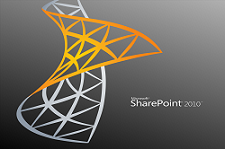Bita Beigishah
Increased Enterprise Connectivity and Productivity

If you read our previous blog, Benefits of Using Microsoft SharePoint, then you already have a basic understanding of the advantages that come with implementing Microsoft SharePoint into your organization. SharePoint software boasts over 150 unique features, one of the most useful is its collaboration abilities.

Before SharePoint was launched in 2001, the only collaboration tool for enterprise environments was Microsoft’s Outlook. While SharePoint proved tremendously useful back then, the need for its capabilities has continued to grow over the years. Organizations employ workers from all over the world and often times will place them throughout several global locations. SharePoint offers a solution to the disconnect that occurs when working with project teams spread out over several office locations. Whether employees are located throughout one particular region or they are spaced out all over the world, SharePoint provides the collaboration space necessary for working effectively and efficiently.
No matter the task or where employees are located (SharePoint works well within a single office setting too), SharePoint provides a number of tools to make the entire collaboration process run smoothly. Below we have outlined some of SharePoint’s top collaboration features:
Social Networking
This feature allows you to develop a social connection to the people you work with and stay up-to-date on the activities of those people you are following. Through SharePoint’s latest version, employees can filter discussions based on topic keywords and stay connected to each other in a more meaningful and less generic sense. The feeling of connectedness that this feature now brings among employees can contribute to an overall better and more productive team environment.
Announcement Lists
Similar to how employees can stay connected to one another through the social networking features, announcement lists also allow for quick informal communication. Teams can stay up-to-date on project changes through announcements, which allow for short news posts, status changes or anything else that needs to be quickly broadcasted to an entire work team. An additional feature in the announcement section is that the broadcaster can implement an expiration date to any post so to eliminate any confusion as to the time period it refers to. This feature comes automatically on the Home Page of your team site.
Discussion Boards
Discussion boards are yet another form of communication for project teams available in SharePoint. Through this feature team members can discuss topics they find interesting, team building opportunities, future projects to pursue and anything else they could possibly imagine wanting to talk about. Discussions can easily be shared, filtered and started through SharePoint, and discussion members can easily alter the view and design appearance of the boards.
Events Lists
In order to stay informed about upcoming events or meetings, SharePoint incorporates an easy to use and follow a list of upcoming events. This feature, as you will see, is similar to the task list as it is intended to limit the amount of confusion that can develop when event dates are stored throughout a number of locations. Meetings and events can also be copied or linked from other compatible calendar programs, such as Microsoft Outlook
Task-List
The task section which falls under here condenses all of the tasks assigned to you in an easy to follow format. Tasks assigned to any team member are accompanied by a project deadline and its priority level. Additionally, tasks will show an up-to-date progress and status report and can be filtered by all tasks, a specific selection of tasks and those that are assigned only to you. This feature keeps all team members on target for finishing their specific assignments and keeps everyone well informed as to the progress of the team as a whole.
Meeting Workspace Sites
SharePoint’s Meeting Workspace feature is a web site designed to centralize all the necessary information and materials that will be used for either one or a series of meetings. Before a group’s first meeting, this site can be designed and then used to send out meeting invites with the links to the Workspace housing all necessary documents and materials. This site can also be used prior to the start of each additional meeting to publish the agenda that will be followed along with who needs to be in attendance and which of the materials will be discussed at that time. Then following the conclusion of the meeting, the final results and the next steps for the project can be published and tracked through the Meeting Workspace.
Document Workspace Sites
Just as the Meeting Workspace is designed for housing meeting information, the Document Workspace is for document collaboration. This site effectively works in the same manner in that it allows multiple team members to view and edit documents at the same time and share their changes with each other. Changes can either be made directly on the Document Workspace site or by copying the material into a different program, editing it through there and then uploading the revision back to the Workspace. The versioning technique that also benefits this feature will be discussed in greater detail next.
Versioning
Revisions are tracked on lists and libraries so that all changes to the properties of items and their files are recorded and can be easily accessed. This is especially helpful when a document goes through several revisions by multiple people and it takes a great amount of development before reaching a final product. The “Check in” and “Check out” feature also makes sure that two people cannot make changes to the documents at the same time, to minimize any conflict that could occur as changes are being made.
